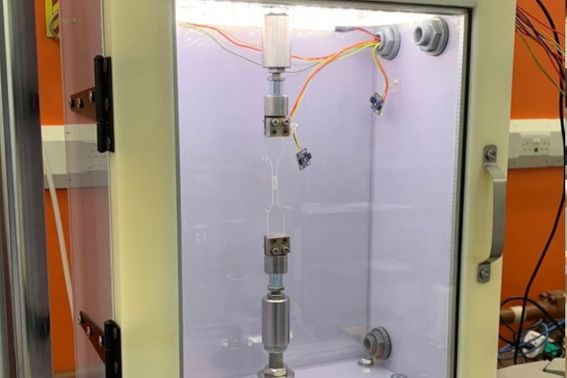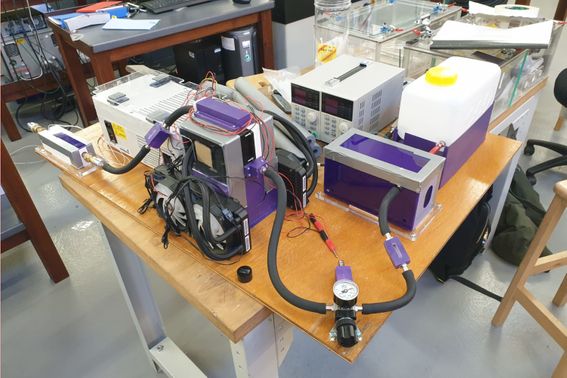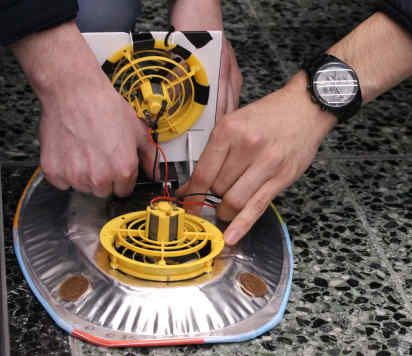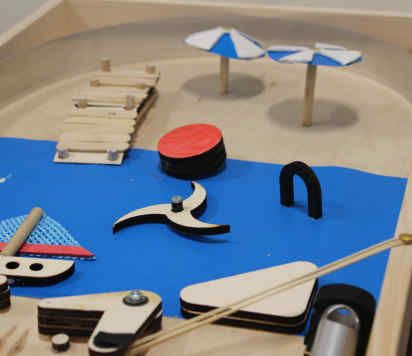Director: Professor Ambrose Taylor
The properties of soft materials, such as food and paints, vary considerably with changes in relative humidity and temperature. Thus measurement of their properties must be done under well-controlled conditions. This project consists of designing, making and testing an environmental testing chamber for use by the Soft Solids Laboratory researchers at Imperial College.
The goal is to enable testing of these soft materials on a universal testing machine under constant controlled relative humidity (RH) and temperature. The anticipated working ranges are 10% to 90% RH and 10°C to 60°C, with a settling time of less than 30 minutes to achieve and maintain the required values to within 1% RH and 0.2°C. The project is split into sub-projects considering (i) the chamber structure, sealing and sensing, and (ii) heating, cooling, RH control and air circulation. The chamber should be able to maintain the conditions for long-term tests which last for several weeks.
Sub-projects

Chamber Structure, Sealing and Sensing
Supervisor: Professor Maria Charalambides
Team members: Amy Collis, Zoe Hatton, Zheng Theng Lim, Chloe Parker
Many everyday materials such as polymers and chocolates have temperature and humidity dependent mechanical properties, proposing the problem of how to test these. To support the Soft Solids Department with their cutting-edge research, an environmental test chamber was developed to permit static and dynamic mechanical testing at constant temperature and humidity.
The chamber interfaces with an environmental control system which produces user specified temperature and humidity levels. Conditioned air can be in the range of 10-60 degrees Celsius and 10-90% Relative humidity. The chamber and its attachment interfaces are compatible with the Instron ElectroPuls E3000 testing Machine and existing grips for tensile, three-point bending and fatigue tests. The three-layered insulated chamber has a double-glazed door with a custom-made frame to minimise heat losses while optimizing viewing quality of the mechanical tests. Polycarbonate walls sandwich commercially available insulation reducing the thermal conductivity of the chamber walls. Stainless steel attachments bridge the testing machine and samples providing corrosion resistance and minimal compliance. Multiple senses are positioned throughout the assembly to provide accurate feedback to the human-in-the-loop control system. Durability has been a priority throughout design and manufacture allowing the robust chamber to withstand everyday use in the lab.

Heating, Cooling, RH Control and Air Circulation
Supervisor: Dr Andrew Marquis
Team members: Alexander Castagna, Jamie John, Muhammad Faieq bin Mohd Fadzil, Jichuan Zhang
Mechanical tests give insight into the properties and behaviour of materials under various loading conditions. However, these properties may vary depending on the surrounding conditions such as temperature or humidity, and as a result, the materials behave in very different ways when under loading. In order to perform material tests under very specific values of temperature and relative humidity, a controlled environment must be created artificially around the specimen. This is achieved using an environmental chamber fitted around the mechanical testing machine.
The aim of this DMT project is to produce the heating, cooling, humidifying, dehumidifying and air circulation system for an environmental chamber. The chamber will be placed inside the INSTRON Electropuls 3000 tensile testing machine in the Dynamic Fracture and Forming laboratory.
The system should be able to achieve any combination of values of temperature and relative humidity in the range 10°C to 60°C and 10% to 90%. This is achieved by treating the air in three stages: a heating and humidifying stage in which air is bubbled through hot water, a cooling and dehumidifying stage in which air is cooled to the right specific humidity, and a reheating stage in which the air is heated to the correct temperature. The system makes use of electrical heaters, Peltier plates, heat exchangers and fans to achieve the extrema combinations effectively. Temperature and humidity sensors at each stage can be connected to a control system to accurately adjust the system output. The air is taken from the pressurised college supply and is fed through the stages to the chambers.



